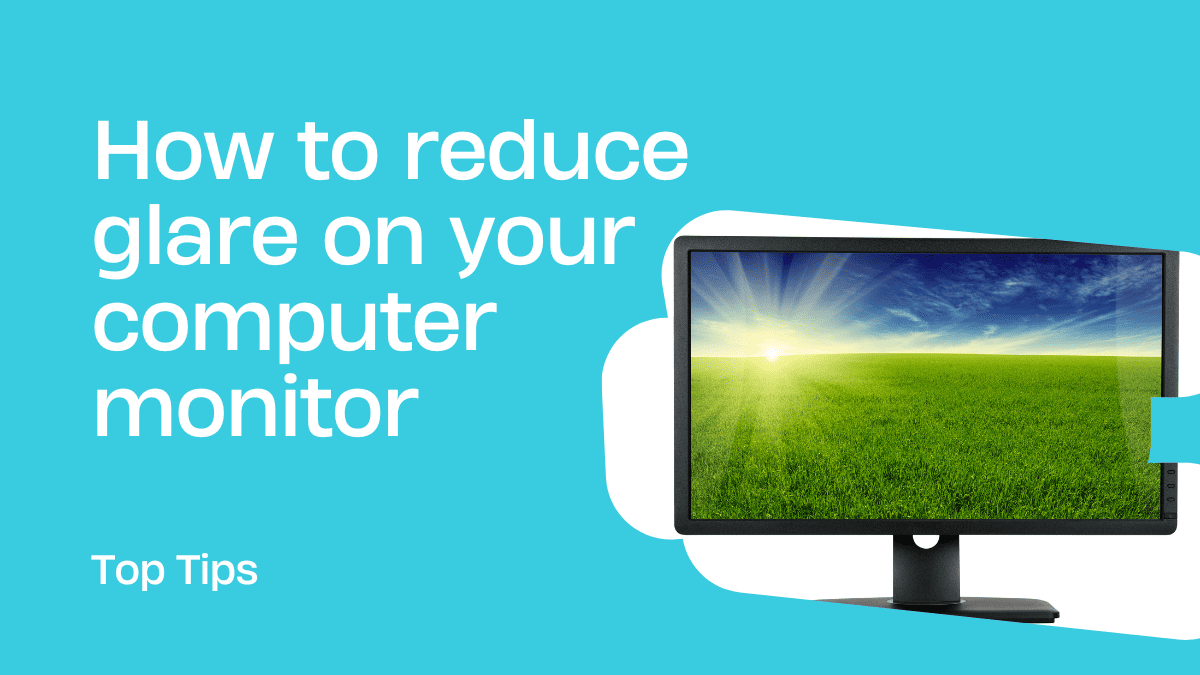
In today’s digital era, one of the most under-discussed yet significant issues affecting our productivity and eye health is monitor glare.
This phenomenon, characterized by a bright reflection on your screen, not only impairs visibility but also strains our eyes.
Given its ubiquitous nature in professional settings, we must discuss practical ways to reduce monitor glare.
What is Monitor Glare?
Monitor glare occurs when light sources—be it from overhead lighting or windows—reflect off the screen, creating a bright spot that obscures the display.
This glare forces our eyes to work harder to discern the information on the screen, leading to eye fatigue, blurred vision, and even headaches.
The Detrimental Effects of Monitor Glare
The impacts of monitor glare are far-reaching.
Short-term effects include eye strain and discomfort, which can lead to decreased productivity.
Long-term exposure can result in more serious conditions such as Computer Vision Syndrome (CVS), characterized by symptoms including dry eyes, blurred vision, and even neck and shoulder pain.
Recent studies have highlighted these harmful impacts, underscoring the need for proper measures to reduce and prevent monitor glare.
Top 4 Practical Monitor Glare Reduction Tips
In our quest to optimize digital workspaces, monitor glare emerges as a significant impediment to both efficiency and wellness.
To address this, it’s imperative to delve into research-backed and industry-proven strategies to reduce monitor glare effectively.
1. Screen Brightness Calibration
The degree of your screen brightness can substantially impact visual comfort and productivity.
Research suggests that the luminance of the screen should align with the ambient light of the workspace (Kim et al., 2017).
If the screen seems to be the primary light source in the room, it is excessively bright.
On the other end of the spectrum, if it appears greyish and lacks vibrance, it’s excessively dim.
Both scenarios facilitate eye strain due to high contrast levels.
By calibrating the screen brightness to match the surrounding light conditions, we can significantly mitigate this contrast, thereby reducing eye strain.
2. Employment of Monitor Hoods
Monitor hoods serve as an effective barrier against intrusive overhead lights or direct sunlight, which are known contributors to screen glare.
By attenuating extraneous light, monitor hoods enhance screen visibility and reduce the need for ocular exertion.
This solution finds its utility, particularly in workspaces where one has limited control over lighting conditions, such as shared offices or areas with substantial window space.
3. Strategic Monitor Positioning
The orientation of your monitor relative to light sources plays a crucial role in the generation of glare.
As per industry best practices, the monitor should ideally be placed perpendicular to windows and distanced from direct artificial light sources to minimize reflection (ISO 9241-6, 1999).
The use of blinds or curtains to modulate natural light influx further reinforces this strategy.
4. Adoption of Anti-Glare Screen Protectors
Anti-glare screen protectors, with their matte finish, significantly reduce glare by diffusing light reflections off the screen.
These affordably priced accessories not only enhance viewing comfort but also serve the dual function of protecting the screen from dust and potential scratches.
These strategies, grounded in research and industry knowledge, can substantially alleviate monitor glare, paving the way for a more comfortable and productive digital workspace.
It’s important to note that these solutions are not universally applicable but require customization based on individual needs and specific workspace conditions.
The ultimate objective is to foster an environment conducive to both ocular health and enhanced productivity.
Role of Technology in Reducing Monitor Glare
Technology offers several solutions for glare reduction.
Anti-glare screens, for example, have a matte finish that diffuses light, reducing reflections.
Additionally, many monitors now come with built-in settings to adjust brightness, contrast, and color temperature, allowing for optimal customization to reduce glare.
Additional Strategies for Eye Health Maintenance
Alongside the above-mentioned glare reduction tips, it’s essential to adopt habits that promote overall eye health.
Regular breaks from the screen, using the 20-20-20 rule (every 20 minutes, look at something 20 feet away for 20 seconds), and eye exercises can significantly alleviate strain.
Conclusion
Reducing monitor glare is not just about comfort—it’s about maintaining productivity and preventing potential long-term harm to our vision.
By understanding the causes and effects of monitor glare and implementing the strategies outlined above, we can create a healthier and more efficient digital workspace.
References
For further reading, consider sources such as the American Optometric Association, Mayo Clinic, and ergonomic studies on workplace health.
Kim, W., Yoo, W., Park, K., Na, N., & Hong, J. (2017). The effect of luminance on color discrimination and visual performance of normal trichromats. Optics Express, 25(26), 33622.
ISO 9241-6:1999 Ergonomic requirements for office work with visual display terminals (VDTs) — Part 6: Guidance on the work environment.
Want to optimize your digital workspace further?
Explore our range of products designed to enhance visual comfort and boost productivity.
